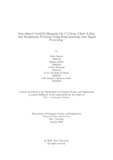| dc.contributor.advisor | Hossain, Dr. Muhammad Iqbal | |
| dc.contributor.author | Tasnim, Sadia | |
| dc.contributor.author | Sarker, Sukarna | |
| dc.contributor.author | Bhoumik, Partha | |
| dc.contributor.author | Al Maruf, K.M. Abdullah | |
| dc.contributor.author | Rahman Hasib, MD Mahfuzur | |
| dc.date.accessioned | 2023-08-14T04:19:22Z | |
| dc.date.available | 2023-08-14T04:19:22Z | |
| dc.date.copyright | 2023 | |
| dc.date.issued | 2023-01 | |
| dc.identifier.other | ID: 19101526 | |
| dc.identifier.other | ID: 19301201 | |
| dc.identifier.other | ID: 19101415 | |
| dc.identifier.other | ID: 19101487 | |
| dc.identifier.other | ID: 22341069 | |
| dc.identifier.uri | http://hdl.handle.net/10361/19392 | |
| dc.description | This thesis is submitted in partial fulfillment of the requirements for the degree of Bachelor of Science in Computer Science, 2023. | en_US |
| dc.description | Cataloged from PDF version of thesis. | |
| dc.description | Includes bibliographical references (pages 42-43). | |
| dc.description.abstract | Despite various preventative measures and therapies, the COVID-19 pandemic has
exposed a number of weaknesses and vulnerabilities in global health systems, particularly in low and middle-income countries that may have less developed healthcare
infrastructure and fewer resources to devote to public health. These countries have
often been hit hardest by the pandemic, with higher rates of infection and death
compared to more developed countries. More than 15 million deaths were reported
nationwide over the first two years of the pandemic.In our thesis, we propose a novel,
non-clinical method for quickly identifying COVID-19 using deep learning and signal
processing techniques. This approach is based on the analysis of CT scans, chest
X-rays, and respiratory patterns, and utilizes datasets containing images and audio
recordings from both infected and healthy individuals. Our model is able to identify
COVID-19 almost accurately using all four of these elements, making it more effec tive than other current models that only use one or two of these parameters. We
believe that a non-invasive diagnostic approach could help to identify more cases
of COVID-19, particularly in resource-limited settings where traditional diagnostic
methods may be less accessible. As the virus continues to evolve,this method has the
potential to slow the spread of the virus by enabling earlier detection and isolation
of infected individuals. In addition, by providing a faster and more efficient means
of diagnosis, this method can help to alleviate the burden on healthcare systems,
which have been overwhelmed by the pandemic in many parts of the world. | en_US |
| dc.description.statementofresponsibility | Sadia Tasnim | |
| dc.description.statementofresponsibility | Sukarna Sarker | |
| dc.description.statementofresponsibility | Partha Bhoumik | |
| dc.description.statementofresponsibility | K.M. Abdullah Al Maruf | |
| dc.description.statementofresponsibility | MD Mahfuzur Rahman Hasib | |
| dc.format.extent | 43 pages | |
| dc.language.iso | en | en_US |
| dc.publisher | Brac University | en_US |
| dc.rights | Brac University theses are protected by copyright. They may be viewed from this source for any purpose, but reproduction or distribution in any format is prohibited without written permission. | |
| dc.subject | Covid-19 | en_US |
| dc.subject | CNN | en_US |
| dc.subject | VGG16 | en_US |
| dc.subject | ResNet50 | en_US |
| dc.subject | ResNet101 | en_US |
| dc.subject | Prediction | en_US |
| dc.subject | Detection | en_US |
| dc.subject.lcsh | Cognitive learning theory (Deep learning) | |
| dc.subject.lcsh | Machine learning | |
| dc.title | Non-clinical Covid19 diagnosis on CT-scan, Chest X-ray, and respiratory patterns using deep-learning and signal processing | en_US |
| dc.type | Thesis | en_US |
| dc.contributor.department | Department of Computer Science and Engineering, Brac University | |
| dc.description.degree | B. Computer Science | |

